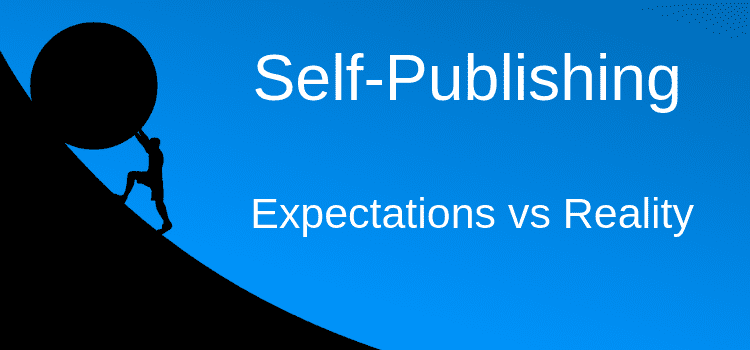
What are the expectations vs. reality for new authors?
Are you dreaming of becoming the next bestselling author? Are you looking for self-publishing advice?
For anyone who writes, it is natural to want your hard work to reap the rewards you believe it deserves.
Today, self-publishing allows all authors to publish for (almost) free and have a book on sale on Amazon and many other online book retailers.
Self-publishing is a great opportunity – if you have a head for business
If you use Amazon’s publishing service, Kindle Direct Publishing (KDP), or KDP Select, you can publish an ebook, which will be on sale in around 24 hours.
A paperback version of a book using print-on-demand takes only a few days.
In the days before self-publishing, the publishing process for a traditional publisher very often took a year or more. It has not changed a great deal for large publishers today.
Getting a book published the traditional way is a long road to take. You need first to find a literary agent to represent you, which is no easy task.
Then if you are lucky enough to find one, it can take months for your agent to secure a publishing contract for you.
If you are one of the fortunate authors who manage to get this far, it is then a wait of another year before your book is released.
After that, you cross your fingers and hope your book sells well. Otherwise, the chances of another contract are slim.
However, if you self-publish, you skip all the waiting and jump immediately to crossing your fingers.
So much has changed, but the publishing industry stays the same.
For anyone who writes a book, it is about hoping that readers will buy your book. And then, if you are lucky, they will post positive book reviews.
The expectations of publishing a book

I started publishing in 2005 with Createspace.
The following four or five years were marvelous for me, with my print books selling through online retailers well enough to get me a nice check every month.
Then came the ebook.
When I self-published my first ebook in 2011, there were fewer than 800,000 Kindle ebooks on Amazon.
Fast forward to today, and it is over 7 million.
Did you know that a new Kindle ebook is now published on average every 3 minutes?
You don’t need to be a statistician to calculate that while the number of ebook titles has risen dramatically, the number of book buyers has not increased proportionally.
This makes ebooks a highly competitive market.
On top of that, Kindle Unlimited has turned all the publishing rules on its head. No longer do you sell a book.
You sell page reads. For authors and publishing companies alike, it is a considerable challenge.
These are the expectations vs. reality for new authors on Amazon, in particular.
Many new authors leap into publishing an ebook on Amazon with the expectation that because their book is for sale, it will sell.
Nothing could be further from the truth. The hard facts are that very few titles sell well, and most struggle to sell more than a handful of copies per year, mostly to friends and family.
The biggest problem is that many newly published authors do zero market research or promotion before a book launch.
Who will buy your book?
If you want to sell anything, you must know your market and how you will attract people to buy your product.
Savvy indie authors know this and have a clear idea of their genre and market potential for their writing.
For example, there is a massive market for contemporary romance but only a tiny market for gardening or rose care books.
However, a small market segment is much less competitive.
Balancing competitiveness and volume is how you understand your potential market share.
Do you want a tiny proportion of the highly competitive romance market or dominate the less competitive rose care genre?
For new independent authors, do not let your expectations cloud reality.
Selling books in today’s market is very hard unless you are an expert in book marketing and know who your potential book buyers are and how you can connect with them.
Putting your book up for sale is one thing. Selling a lot of copies is another reality altogether.
The realities of making it with self-published books

The first reality to understand is that vanity presses will never help you succeed.
I hear from many authors who had wild dreams, were told mistruths, and paid a lot of money to publish their books. And all for nothing.
Vanity publishing is not self-publishing. Paying a vanity publishing company to sell books to you is not a recipe for success. Do not fall for the trap.
You can only succeed if you can sell books to readers. And you can.
Here is a short extract from the 2018 Author Earnings Report. (Unfortunately, the Author Earnings website has now closed down.)
“Despite the prevalent indie doom-and-gloom rumours, today’s top sellers are handily making as much or more than the top-selling indies from prior years were.
But here’s the kicker. A lot of today’s top-selling indies are relatively new names. We didn’t recognize a lot of them. And a lot of yesteryear’s pioneering indie superstars no longer even make the Top 50.”
A look at ebook sales for 2017 tells an optimistic story for indie-publishing authors.
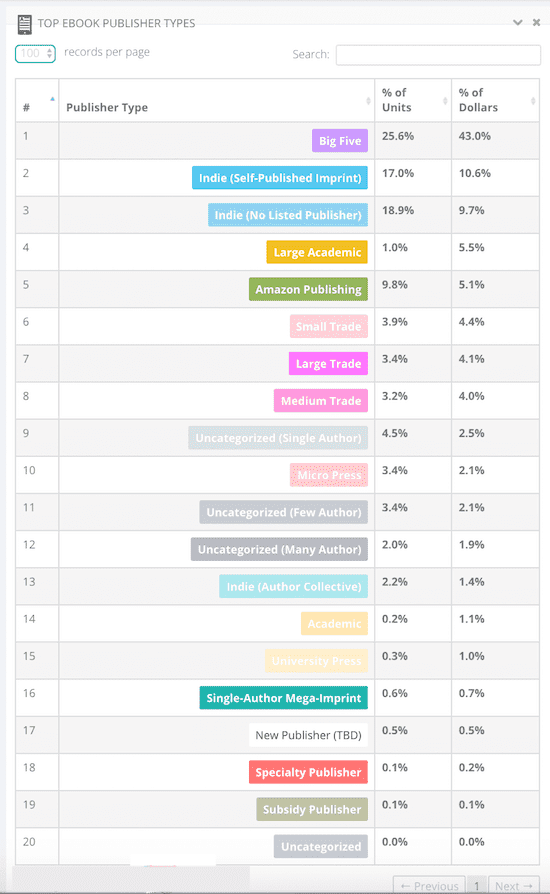
Combined Indie author ebook sales of imprint, not listed and collective amount to over 37% of the market. A full 12% higher than the Big Five publishers.
Self-published books are hard to sell
There is no doubt that readers do buy self-published titles and far more than traditionally published titles.
But don’t expect to be part of this success if you think that everyone in the world will want to buy your book about rose care or romance.
You have to know your specific genre, the demographics and interests of your potential readers, and, most importantly, how to get them to find your book.
You might have a fantastic book title, a brilliant, professionally designed book cover, and the interior of your book formatted by a book designer.
But unless the story or subject of your book is what readers really want to read, your book can still fail.
Book buyers are fickle, so you need to give them a compelling reason to buy your book.
Learning about how people find books they want to buy

Understanding how and why people buy books is your first step toward being a successful indie publisher.
Yes, you need a great story, a brilliant book description, and a fantastic cover design.
You need to be a little tech-savvy and know how to exploit social media and attract attention via your blog with good use of SEO.
Most of all, though, you need to know how to leverage categories and keywords for your books.
Getting your book into the right place for readers of your genre to find is more powerful than any other form of book marketing.
The new breed of successful Indie authors is quietly and studiously using data to help readers find their books on Amazon and other retailers. It is an electronic form of getting your book on a shelf at the front of a bookstore.
The expectations vs. reality for new authors equation is now that you can only expect to gain regular book sales if you understand the necessity to use data.
What is book data?
Learning how to access and leverage Amazon book sales data is now crucial to succeeding in the online book market.
To use the example I mentioned before of the difference in the market for contemporary romance and rose care, here is some hard data.

In line six, the book, The Rose Garden, is fiction, so it needs to be ignored.
But you can see that the monthly sales for books related to rose care and rose gardening are very small.
The best-selling book is making $73.00 per month.
Now let’s look at contemporary romance.
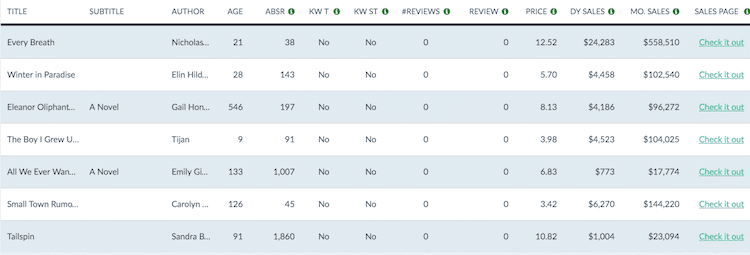
What a difference! Yes, your eyes aren’t deceiving you.
In 21 days, Every Breath has made sales of over half a million dollars.
When you can access data as illustrated above, you can drill down to find your niche market and find keywords and categories to make your book as competitive as possible.
This is the future of independent publishing. Using data to position your book where readers can find it and buy it.
In SEO, there is an expression that if your page ranks on page one of Google Search, you get traffic. If it is listed on page two, it is in the graveyard.
The same applies to books on Amazon.
If your book appears on the first page when a book buyer searches for a new book, you will make book sales. If it appears on page two, you won’t.
The future success stories of indie publishing
Book buyers don’t discriminate between traditional published and self-published books and ebooks. They simply buy books they want to read.
In the past, the best advice to new authors was to have a fantastic book cover, a great book description to hook readers and to have a book properly edited.
But today, that is now not going to be enough to succeed.
The path to success today and in the future will be to learn how to market a book in an electronic online market.
Using data research to find your market niche and position your title better, so buyers see it will be more important than your book cover and description.
That is why the Author Earnings Report mentioned earlier stated that today’s top-selling indies are relatively new names.
They are the new authors who know the power of data and how to use it.
Related reading: Is It Easy To Self-Publish For A First Time Author?

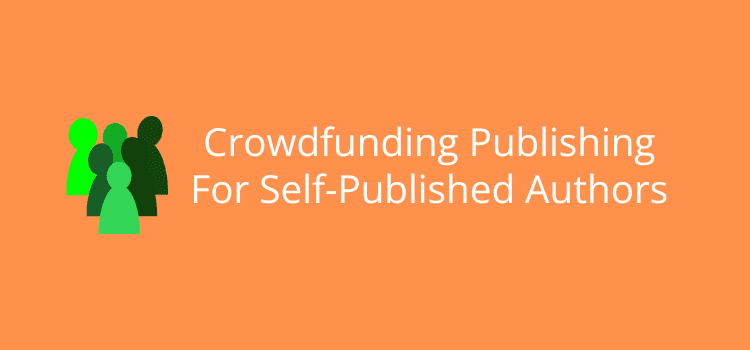
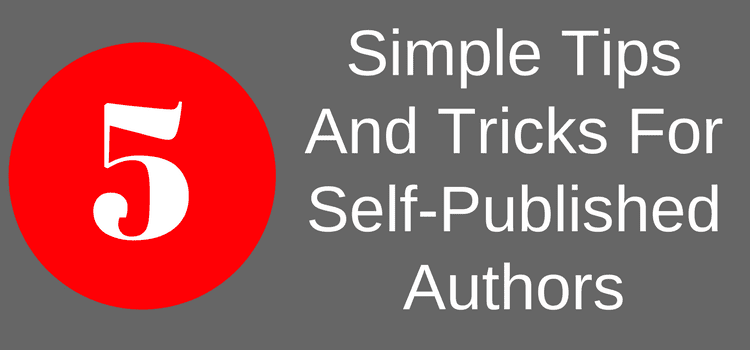
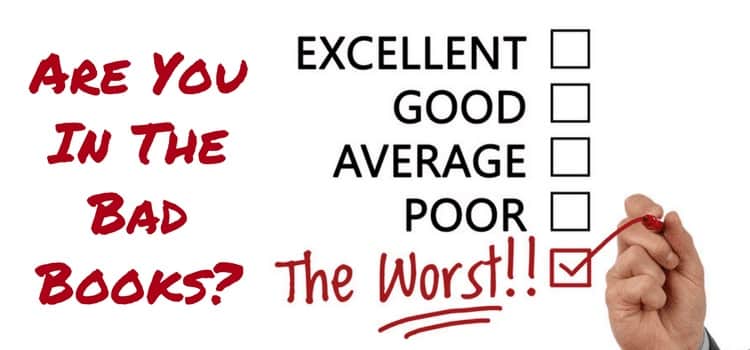
Good catch. It’s truly all in the data. Thank you!